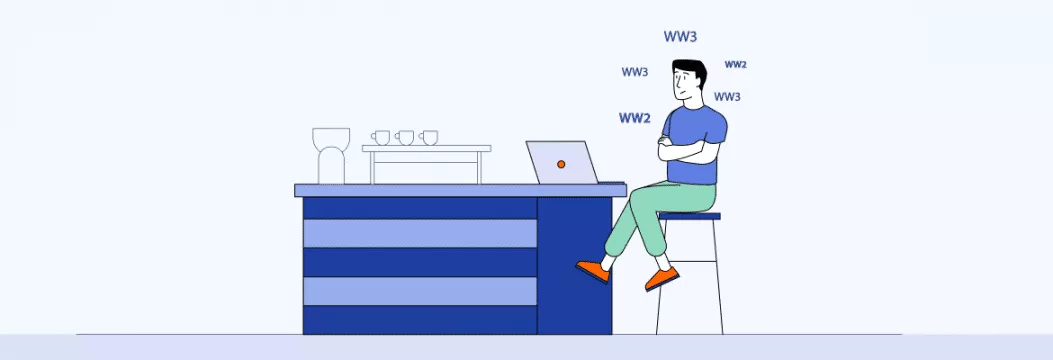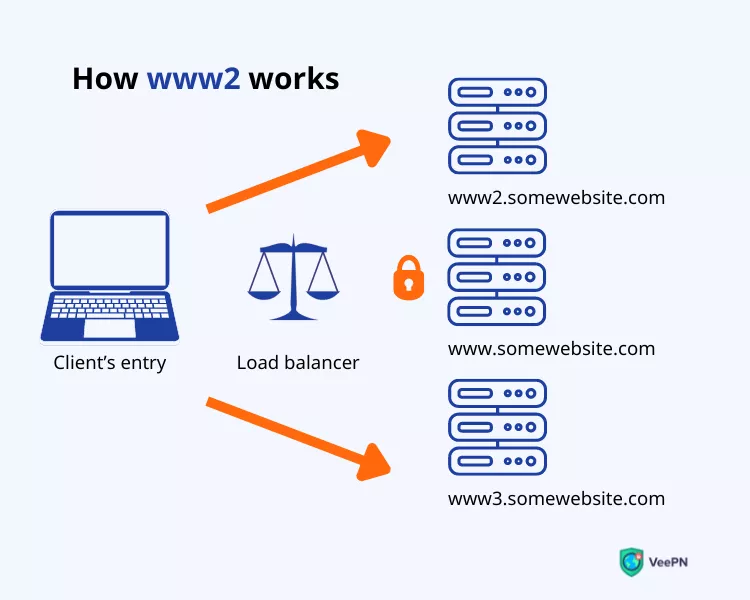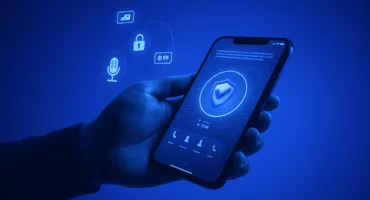What Is WWW2 (and Other Weird Numbers in Your URLs)?

We’re all familiar with www, which is the abbreviation for the world wide web. However, many people are still confused about the meaning of this term. Despite a common misbelief, www is not another name for the Internet. In fact, it’s the prefix of a domain name you can see when opening any web page.
Ok then, but what is www2 URL and other numbers you can sometimes see after www in your address bar? If you’re concerned about your cyber security, you probably wonder if these uncommon domain names can be dangerous. Keep reading this article to explore www2 and find out whether it is safe to use.
What is WWW?
First of all, let’s define the difference between www and the Internet.
The Internet is the network that you use to access sites and web pages and communicate online with other users via email, message services, or social media. Today, the Internet consists of 1.7 billion websites and even more web pages, with half a million new sites appearing every day. In turn, the World Wide Web (www) is an interconnected collection of web resources users can access via the Internet. It is made up of various content, such as web pages and websites.
But what’s the role of www in the URL address? As already mentioned, it is not part of your domain name but a prefix denoting the path of an entry. And it is not the only existing one. Some other examples are ftp for file-sharing services and mail for email services.
Also, do not confuse domain prefixes with technical requirements for URLs, such as the SSL certificate and HTTPS encryption. They are rather subdomains of larger sites. So it’s perfectly possible to create a domain without www, and the website will still function properly. However, the majority of big sites with multiple web pages include www in their domain names.
Now, let’s clarify the meaning of www2, www3, and other weird numbers after www in your URL address.
What is WWW2?
Similar to www, www2 is a domain name prefix indicating the use of the world wide web. The number following the www prefix denotes that you’re visiting a subdomain or a related web page. So when you see www2 at the start of a URL, you are visiting a copy of the original website hosted on www. It’s a common load balancing technique that redirects your traffic to another server, which makes content instantly available. Alternatively, the www domain hosting server might be going through maintenance or development work.
For instance, you are visiting a hypothetical www.somewebsite.com. However, the main server of this website is experiencing an overload. Too many requests would make it work slower and might even cause a complete crash. Or maybe developers are currently providing maintenance services. In this case, your request will be redirected to www2.somewebsite.com. And you will access the desired content hassle-free.

Now you know that the www2 meaning in URL is not as mysterious as it might seem. But what if it’s www3.somewebsite.com or even www4.somewebsite.com? Is it even possible? Let’s find out.
What is WWW3, WWW4, and so on?
If you see www3, www4, or such, these are additional website hostnames and subdomains. Just like in the case of www2, your traffic is redirected to another server while the main ones are overloaded or not working at all. Some websites have multiple copies on different servers and use them to avoid traffic overload. The more web servers engaged, the higher the number after www.
Is WWW2 safe?
Yes, absolutely. Although it looks unusual, particularly if you come across it for the first time, you have nothing to worry about. www2 is just a legit copy of the www website you’ve intended to visit. And once the original site is back up and running or the traffic volume has subsided, the URL will likely return to www.
Many confuse www2 websites with phishing attempts and online scams. However, these evil clones of real sites mostly fake not the prefix, but the domain name itself. For instance, if we take the example above, www2.somewebsite.com is totally fine. But www.somewebs1te.com and www.asomewebsite.com are likely phishing traps you’d better avoid.
Whatever the URL looks like, stay safe with VeePN
www2 websites are safe to use and will have no impact on your online security. But it always pays to be cautious when surfing the web. Online threats are everywhere, and they are often hidden more carefully than you might expect. Phishing websites, email scams, malware-infected files, and even fileless viruses can compromise your cybersecurity without your notice. As a result, your private data can be stolen and transferred to malicious actors.
But there’s always a way out. If you want to give yourself complete peace of mind, it is worth investing in a reliable VPN service. And VeePN is your best bet. This powerful tool will block any malicious websites and protect you from scams with its powerful NetGuard feature. Besides, top-grade AES-256 encryption will enhance your privacy and make your online presence untraceable. Try VeePN today and take your online security to the next level.
FAQ: What is WWW2?
A www2 website is a copy of the original www website hosted on another server. Your traffic can be redirected to www2, www3, or even www4 in case the original site is overloaded or experiencing temporary maintenance works. However, such copies contain exactly the same content as the main website.
Yes, www2 websites are completely safe to use. www2, www3, and so on are just domain prefixes indicating spare copies of the main website. In turn, phishing sites usually try to resemble a legit domain name. For instance, it could be www.examplewebs1te.com instead of www.examplewebsite.com. To learn more about www2 meaning in URL, read this article.
The world wide web (www) is a set of web pages users can access via the Internet. In the website URL, it’s a prefix indicating the path of your entry. The other examples of domain prefixes are ftp (file-sharing services) and mail (email services). In turn, www2 indicates a legit copy of the original website used by its owners for load balancing. You are redirected to a www2 address when the main website is overloaded or doesn’t work.
VeePN is freedom



